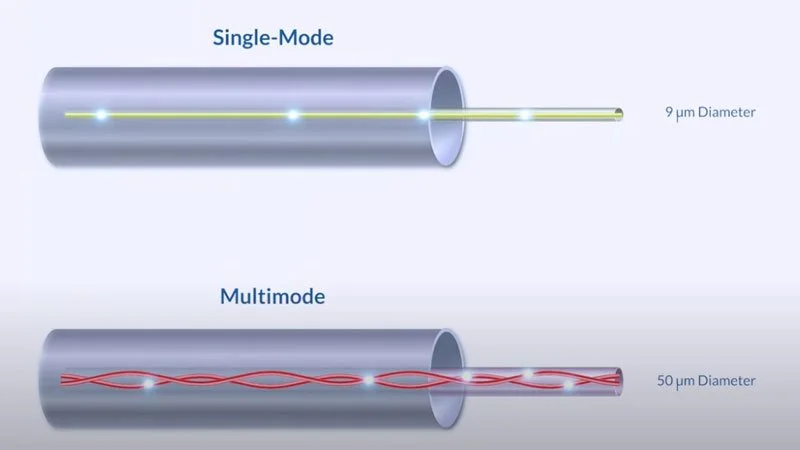Single-mode fiber (SMF) VS multimode fiber (MMF)
Single-Mode Fiber (SMF):
Core size: Smaller core diameter (typically 8-10 micrometers).
Light modes: Supports only one light mode, reducing signal dispersion and allowing for higher bandwidth and longer transmission distances.
Bandwidth: Offers superior bandwidth capabilities, supporting data rates of 100 Gbps and beyond.
Distance: Can transmit signals over longer distances, typically 40 km or more.
Cost: Generally more expensive due to the need for higher precision manufacturing and more expensive active equipment.
Ideal for: Long-distance communication, high-bandwidth applications, and situations requiring minimal signal loss.
Multimode Fiber (MMF):
Core size: Larger core diameter (typically 50 or 62.5 micrometers).
Light modes: Supports multiple light modes, which can lead to signal dispersion over longer distances.
Bandwidth: While still capable of high-speed data transmission, it reaches its bandwidth limit sooner than SMF, with maximum speeds ranging from 10 Gbps to 400 Gbps.
Distance: Typically used for shorter distances, up to 2 km or less.
Cost: Generally less expensive due to simpler manufacturing and lower-cost equipment.
Ideal for: Local area networks (LANs), data centers, and other applications where data needs to be transmitted over relatively short distances.

